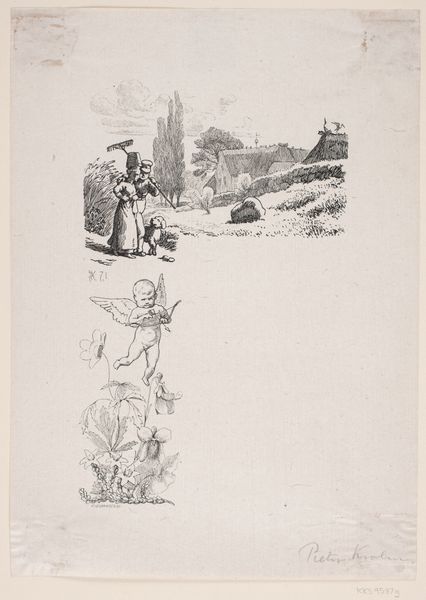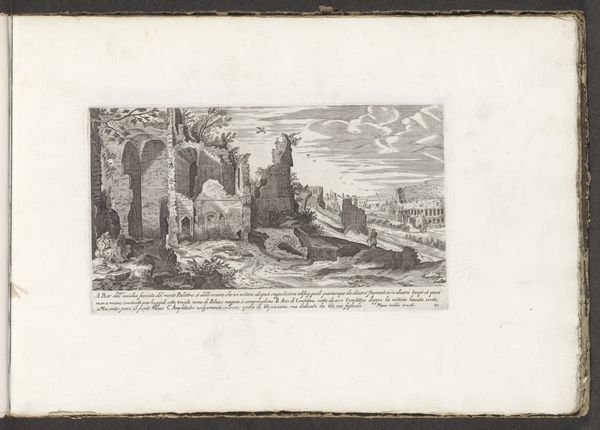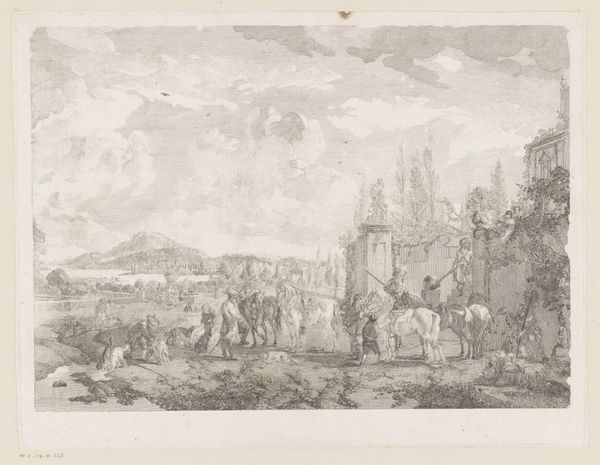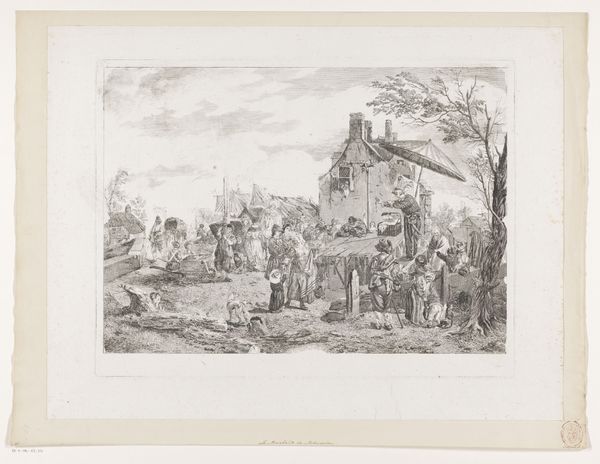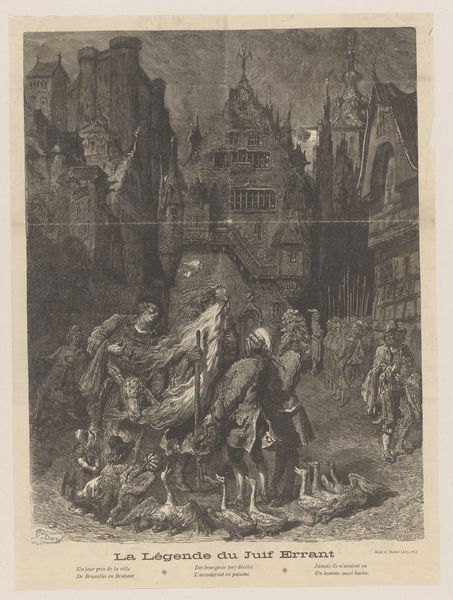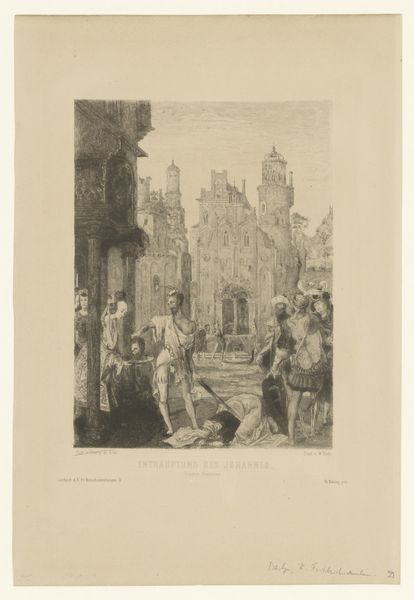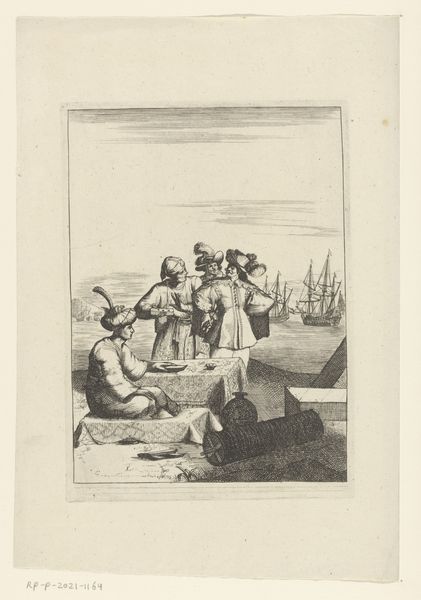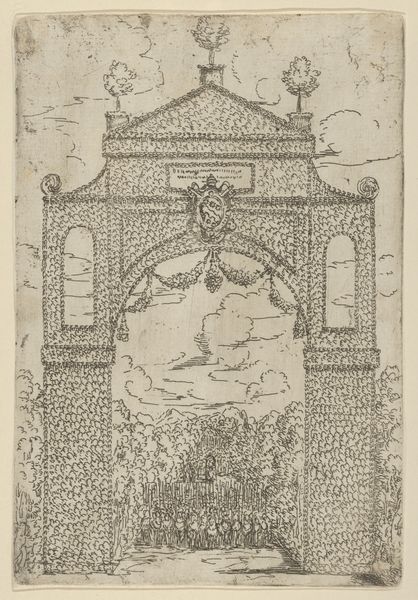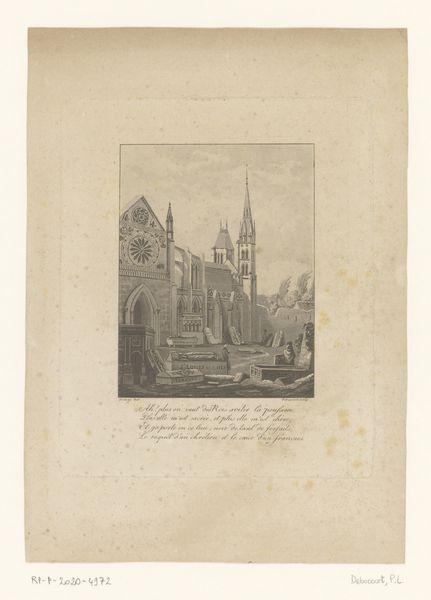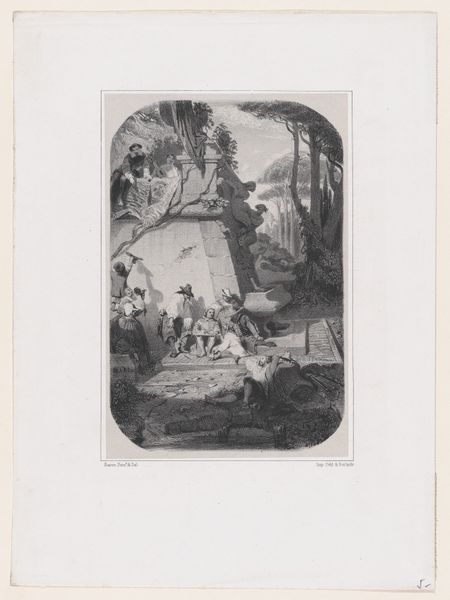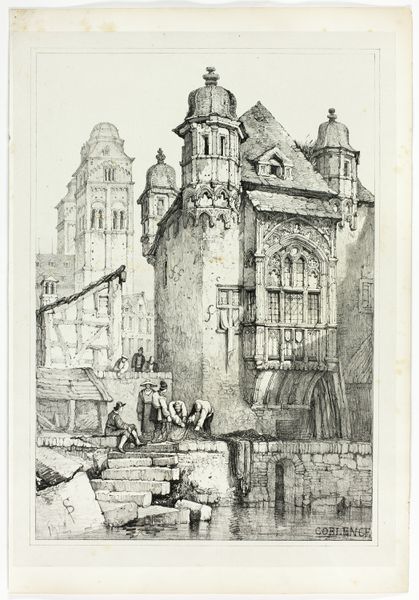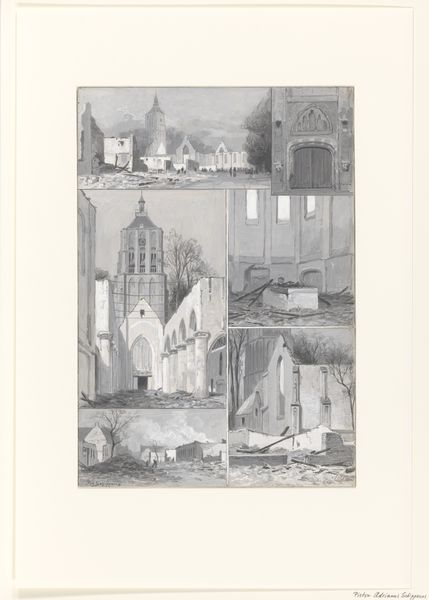
Plate 5: women collecting plants and carrying them over their heads, a male onlooker at right and a castle at right in the background, from "Lieder eines Malers mit Randzeichnungen seiner Freunde" 1836
0:00
0:00
drawing, print
#
drawing
# print
#
landscape
#
sketchwork
#
romanticism
#
genre-painting
#
history-painting
Dimensions: Image: 9 1/8 × 7 7/16 in. (23.2 × 18.9 cm) Sheet: 10 11/16 × 8 3/4 in. (27.2 × 22.3 cm)
Copyright: Public Domain
Editor: So, this is Eduard Bendemann's "Plate 5," from a series of prints made in 1836. It's a delicate scene, women gathering plants, watched over by men and framed by castle ruins and rolling hills. It gives me a romanticized vision of labor and leisure. What stories do you think Bendemann is trying to tell us here? Curator: That's a perceptive reading! It's crucial to remember that 1836 was a period of rising nationalism and historicism in Germany. Bendemann, known for history paintings, likely aimed to evoke a sense of idealized German past. What social role might a work like this have played? Editor: Hmm, I guess to inspire pride in local traditions and maybe suggest a sort of timeless, pastoral harmony? Curator: Precisely. And notice how the architectural elements contribute. Castles are visual shorthand for history. Also, it is a ‘print’ designed for wide distribution to the masses. What does the placement of the male onlooker suggest in relation to these women, or the act of plant collection itself? Editor: Well, they are in the periphery. Maybe there is some suggestion about labor and gender. The women's work literally provides a foundation upon which men, like the castle, observe and protect, almost as historical artifacts now? Curator: An insightful interpretation. It speaks volumes about contemporary views on women’s roles in relation to labor and social position during this period and who history serves. These elements worked together to construct a specific narrative of German identity at a critical juncture. What's your impression of its political effect now? Editor: Now, it reads more like an idealized past than a reflection of actual work...but thinking about its function, and impact, contextualizes it more in its own moment. Curator: Yes, by recognizing these social dimensions, we gain a richer appreciation, both of Bendemann’s work and the socio-political milieu from which it emerged.
Comments
No comments
Be the first to comment and join the conversation on the ultimate creative platform.
